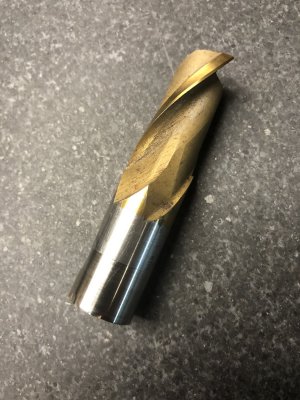- Joined
- Nov 5, 2019
- Messages
- 218
Hello,
I have a few double sided 3/4” end mills that are in good condition. I cut one in half to use as a stubby, but need to reduce the shank from 3/4 to 1/2”. I tried turning it on the lathe with a carbide insert but that wouldn’t even touch it, very hard stuff. Any diy ideas on accomplishing this? Annealing, grinding?? Do you think just the surface would be hard or the whole thing? I do have an oxy/ acetylene torch.
I have a few double sided 3/4” end mills that are in good condition. I cut one in half to use as a stubby, but need to reduce the shank from 3/4 to 1/2”. I tried turning it on the lathe with a carbide insert but that wouldn’t even touch it, very hard stuff. Any diy ideas on accomplishing this? Annealing, grinding?? Do you think just the surface would be hard or the whole thing? I do have an oxy/ acetylene torch.


